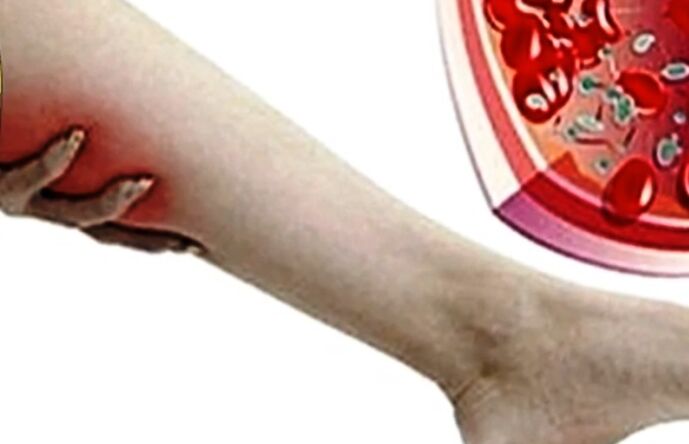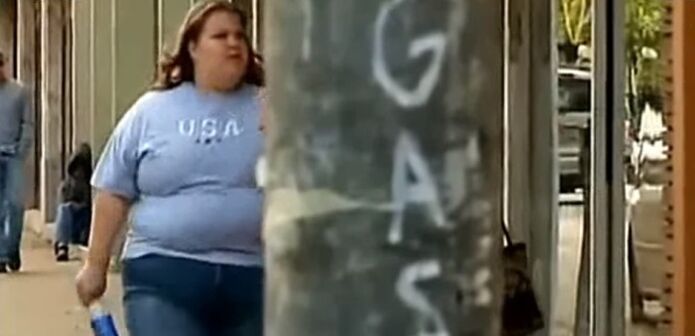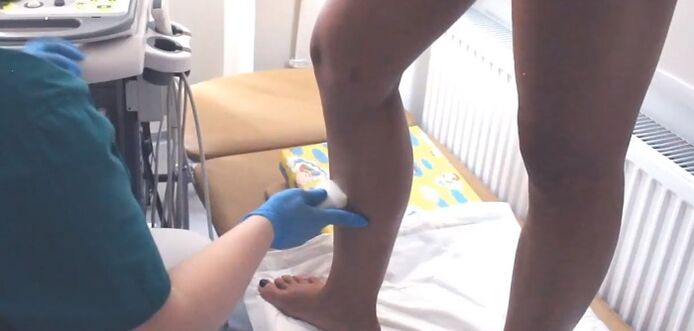Pathological processes that affect the vascular system are serious danger than the body.This refers to any diseases of this kind, regardless of their proportion and localization.In particular, this refers to varicose veins, which in most cases affects leg containers.
In the modern world, varicose veins is one of the current problems, many people are subject to its development.Pathology is not only a cosmetic problem, the damage to the vessel in the legs has serious consequences.Therefore, it is important to understand the mechanisms for the development of varicose veins, know its symptoms, and also have ideas on treatment.
Varicose vein development mechanism
Varicose veins or varicose veins are called the disease in which the ships mentioned to the pathological changes in the following nature:
- Expansion, ie increase in lumens of the vessel.
- Stretching or rather, prolonging veins.
- The thinning of the vascular wall, because of which the vein becomes more fragile and more prone to physical damage.
- Exhaustion or gradual destruction of valve devices that plays a decisive role in the process of blood transport back to the heart.
- In the late phases of the disease due to the deformation of veins, nodules or "vascular stars" like an aneurysm are formed.
All described injuries lead to two types of consequences, aesthetic and functional, where another type is much more weight.If we talk about the aesthetic factor, we are talking about the fact that subcutaneous boats increase size, swollen and appear closer skin surface, which is why they become clearly visible even with naked eye.As the disease advances and increases the deformation of veins, they begin to remind hugs, nodes appear that difficult to make a aesthetic appearance.

But functional problems are more serious and more dangerous, because we talk about violating the main function of veins - transporting blood from organs to the heart.Varicosis contributes to stagnant processes in vessels, due to the exhaustion of the valve, blood is not fully evacuated, stagnite.This leads to local toxic lesions, as well as gradual increase in pressure in vessels.Finally, in the later stages of the disease, vessels cannot handle excess pressure, tears appear in thin walls, leading to bleeding, hematoma and trophic rectors.
Classification of varicose veins
It has repeatedly stated that the degree of damage and the deformation of veins depends on the disease progress phase.Therefore, it is worth mentioning that it is common to classify varicose veins according to three phases of development:
- The first and easiest form of illness is compensatory.It is characterized by a minor deformation, it is often impossible to determine often without proper diagnosis.The symptoms in this case are scarce or completely absent.
- Subcompossation or medium phase - veins appear on the skin surface, increasing, such as deformation, insignificant.However, vessels and vascular networks are already clearly visible, and in the evening of patients, increased feeling of fatigue, cracking, swelling, smaller pain can be disrupted.It is characteristic that until morning (after night sleep or long years) symptoms disappear.
- The decompensation phase is the hardest - we are talking about a serious defeat of veins, their pronounced deformation.The vessels are not only very visible, they look like tubercles and break out on the skin surface, nodule, eczema, hematomas appear.Described symptoms in the form of pain, edema and other unpleasant sensations intensify.
It is important to understand that in the beginning of varicose veins, it is not a serious danger and on time, the treatment begins prevents the progression of the disease.But if treatment is not engaged, there is a high risk of complications, including thrombosis, inflammatory processes in the veins, the formation of trophic rectors, permanent pain syndrome.
Disease development factors
Knowledge of causes and factors predict the development of varicose veins do not only assist in the fight against the pathological process, but also prevent its development.These reasons and factors are as follows:
- Genetic predisposition - In this case, we are talking about hereditary predisposition to the weakness of the ventilate, as well as the underdevelopment of the bonding tissue of the walls of blood vessels.Such irregularities in development increase varicose veins development, as the valve apparatus is initially subject to functional disorders.
- Professional component - Water risk group and people based on their professional activity are forced to spend long time on their feet, especially those who cost a lot (hairdressers, sellers, chefs, surgeons, etc.).
- Overweight
 - Accumulation of excess weight leads to increased legs, in addition, in this case the level of cholesterol in the blood increases, which also negatively affects the functioning of the vascular system.The higher the degree of obesity, is more likely to be the probability of the facts of varicose veins development.
- Accumulation of excess weight leads to increased legs, in addition, in this case the level of cholesterol in the blood increases, which also negatively affects the functioning of the vascular system.The higher the degree of obesity, is more likely to be the probability of the facts of varicose veins development. - Contribution to the emergence of expanding the varicose vein of the pathology of blood coagulation.Due to the increase in blood platelets, blood becomes more likely, there is a risk of blood clots.All this prevents normal blood circulation, causing varicose veins.
- Another factor in disease development are serious hormonal disorders.Women are more affected by such problems, especially during pregnancy, menopause or taking hormonal drugs.
The list shows only the main factors in the development of varicose veins, in fact, there is much more.For example, we add unpleasant shoes or walking in high heel, alcoholism, smoking, diabetes, mechanical damage to blood vessels, etc.
Clinical picture
Very often, varicose veins in early forms of development cannot show at all, symptoms appear at 2-3 stages of disease advancement.However, it is worth considering symptoms, starting from the first signs:
- The first symptom that indicates the appearance of varicose veins is fatigue in the legs.Initially, this feeling is insignificant, it seems to feel mostly generally in the evening.But as the disease develops, fatigue takes care of everything more often, becomes more intense.
- The feeling of grip and pain - start bothering from the second phase, at first evening is also closer, and in the morning completely disappear.But as before, with the advancement of varicose veins, they become more intense, ultimately concerned.
- Proped veins and vascular network - This feature also become more obvious as the pathological process is developed.In the beginning, veins are simply visible more severely than usual, in later stages held, Tubercles appear, the "star" form.
- Swelling - They can start disturbing immediately, in such cases seems unreasonable, and swelling itself is so insignificant that they are practically not feeling.Over time, the legs are increasingly and more swollen, which causes a lot of discomfort and increases pain.
- Convulsions - It is believed that if a person is systematically bothered by convulsions that cover calf muscles or foot, it can also be signs of varicose veins.
- Hypertermia - occurs in the late phases of disease development and is expressed by changing the skin color, leather on your feet becomes cyanotic.
Diagnostic methods
In order to treat varicose veins, the most common, accurate understanding that the development phase is disease and assesses the degree of hemodynamics.To do this, you must go through a number of diagnostic measures:

- The initial inspection, during which the doctor finds out the patient's appeal, collects anamnesis, and also conducts a visual inspection and palpation of problem areas.
- Ultrasonic scanning to introduce with dynamic characteristics of blood flow.
- Duplex Vene scan is one of the most prominent diagnostic methods that provides a detailed visual image of blood flow rate in different parts of the vascular channel.
- Bat that uses a contrasting substance introduced into veins studied.
Treatment of varicose veins
Fighting varicose veins of any seriousness requires contacting a flexologist who will make treatment regime based on the obtained diagnostic data.
Drug therapy
The main impact that is expected to take medications is a reduction in pressure in veins by removing standing processes, renewing normal blood circulations.In addition, the therapy may require symptomatic treatment.Generally, the doctor can prescribe drugs of such groups:
- Venotnik and Flebthornics - Designed to improve the outflow of lymphatic and normalization of blood circulation, perform the main task of treatment.
- NSAID Group Medications - Stop the painful sensations, and also have anti-inflammatory effect.
- Anticoagulants to reduce blood viscosity and prevent thrombosis.
- Also, people with varicose veins are recommended to carry special compression bedding.
Only the doctor is engaged in determining the need to use any medicine and his appointment.In addition, drug therapy does not only allow disease to progress, it is impossible to return to deformed vessels to the previous country with conservative treatment methods.
Traditional medicine
People's medications are unable to have an equally serious therapeutic effect as a traditional medical methods.However, "Grandma Recipes" is a great help to treat drugs, so we will consider some of the most efficient recipes:
- Tomato compresses - just cut off tomatoes from slices and fasten to problem areas for 15-20 minutes.The tomato contain a carotenoid pigment that promotes strengthening and toning veins.
- You can make a potato compression, for it, put your legs by cleaning potatoes and tie him in 2 hours.The same method works with the use of cabbage and Kalanhoe sheets, but cuts must be made on these plants.
- It is also recommended to rub their legs with apple vinegar a day before bed, the course of treatment is 30 days.
Surgical treatment
Surgery in the fight against varicose veins is the most effective method that is radically solved by the problem, not just restraint illness.The surgical methods of treatment include:
- Sklerotherapy - the introduction of a special substance in a venous lumen that lesseily vessel, as a result of disappearing independently, replaced with binding tissue.
- Laser exposure is applicable to the blood vessels located near the surface of the skin.Laser irradiation creates the effect of sclerosis in Vienna, as a result that the vessel disappears.
- Felbectomy - overflow of the location of the deformed vein with subsequent removal of its trunk.
